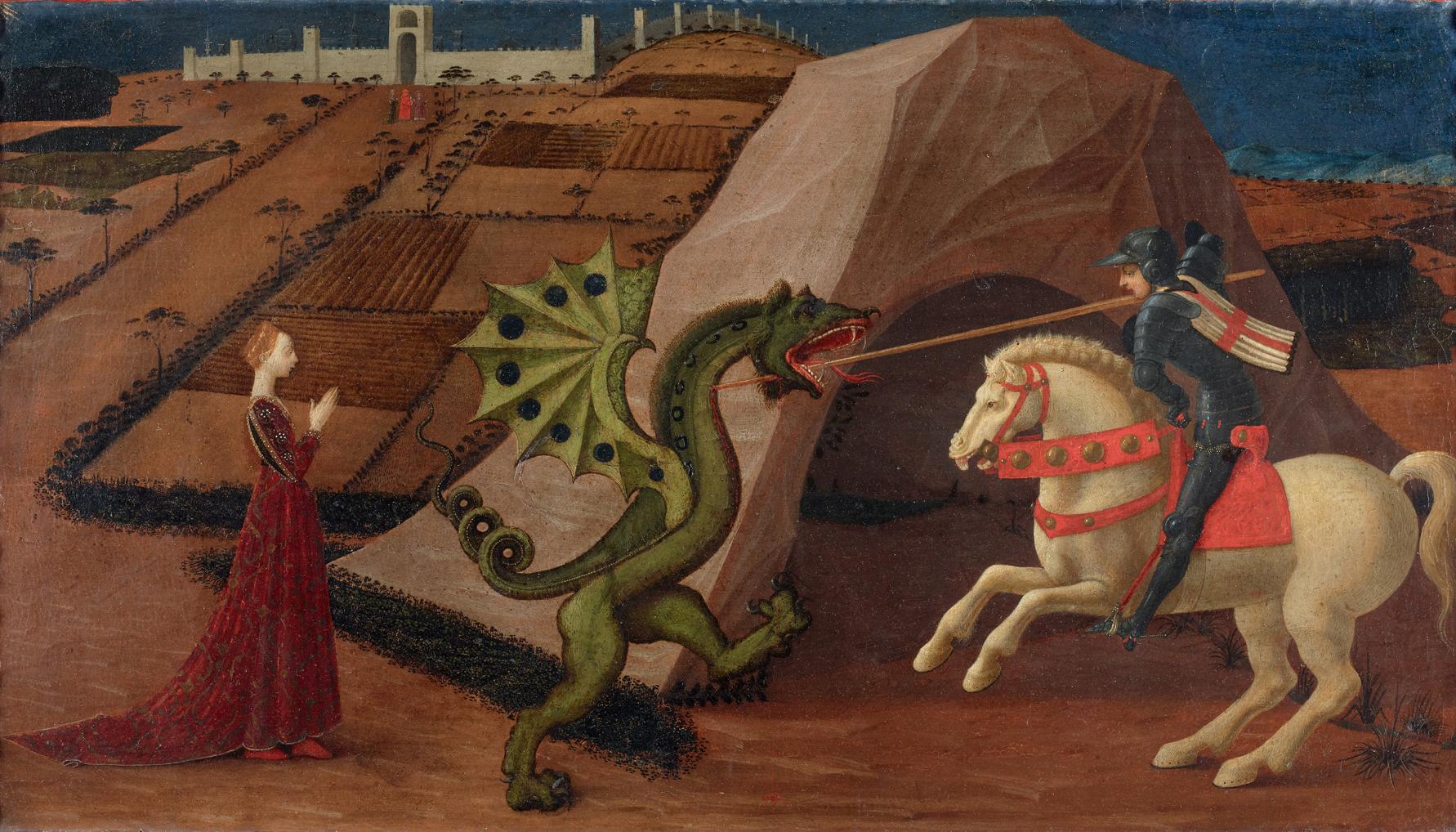Saint George and the dragon
1430-35, painted wood panel, 131 x 103 cm
Why is this work so important?
This emblematic work by Paolo Uccello has for a long time been considered the rarest work in the Musée Jacquemart-André’s Italian collection, and, indeed, the museum’s masterpiece.
The painting on wood by Paolo Uccello represents Saint George running the dragon through with his lance, as it prepares to devour the king’s daughter. This theme, which is oriental in origin, was adopted by the Christians to symbolise the deliverance of the Church, oppressed by paganism. This combat is an important episode in the legend of Saint George. It is frequently depicted in paintings and sculptures. The medallion-like outline of the princess, the arabesque nature of the dragon, which looks like something out of a Gothic coat of arms, and the representation of the saint are in keeping with tradition, but the landscape is rendered in a more modern manner through the introduction of perspective. This duality is very characteristic of Paolo Uccello’s work.
In detail
 In the centre of the composition, a huge cave divides the landscape in two. Each part contains vanishing points, perspective, and different backgrounds. The complexity of the perspective is very characteristic of Paolo Uccello’s work.
In the centre of the composition, a huge cave divides the landscape in two. Each part contains vanishing points, perspective, and different backgrounds. The complexity of the perspective is very characteristic of Paolo Uccello’s work.
Did you know?
Nélie Jacquemart viewed this canvas in the Florentine palace that belonged to her favourite antiques dealer. But, since it was prohibited to take the work out of the country, Nélie had to wait until the London auction of 1899 in order to acquire it.

